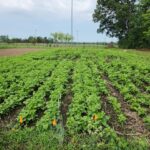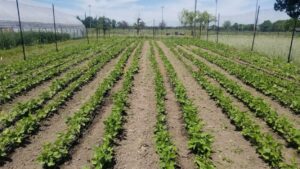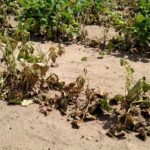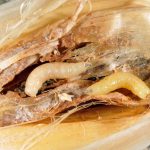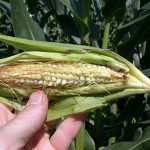The 2023 dry edible bean harvest wrapped up in mid-September. This season was unique from a weather standpoint – dry in June and wet in July, rather than the other way around. How did this affect the trial? Dry beans are a short-season crop, especially compared to many of the field crops we are used[Read More…]
Legume Vegetables
The Purdue Small Farm Education Field Day is presented on July 27, 2023, at the Purdue Student Farm in West Lafayette, IN. Registration for the field day is now open. To reserve your spot, visit https://cvent.me/ewWN3b. Students register for free! Please get in touch with Lori Jolly-Brown to receive the discount code for student registration.[Read More…]
The 2022 Purdue Small Farm Education Field Day was a big success. Nearly 72% of attendees reported that they learned something new. Nearly half indicated they plan to adopt recommended practices for diversified farming systems, and over a third (36.0%) plan to adopt recommended practices for creating, improving, or strengthening their business. Half (52.0%) indicated[Read More…]
The 2022 Purdue Small Farm Education Field Day was a big success. Nearly 72% of attendees reported that they learned something new. Nearly half indicated they plan to adopt recommended practices for diversified farming systems, and over a third (36.0%) plan to adopt recommended practices for creating, improving, or strengthening their business. Half (52.0%) indicated[Read More…]
A diversified farm plans its crop rotation around producing various perishable products that sell well, like tomatoes, peppers, and leafy greens. As the farm builds market opportunities, it might consider adding new or unusual crops to the crop plan. Storage crops can be part of that plan, extending the sale season for growers and additional[Read More…]
Root rot of snap bean can be a devastating disease in Indiana. Often, the first symptom observed is the collapse and wilt of the plant (Figure 1). The roots of such plants may be discolored and rotten (Figure 2). Lower areas of the field and fields which are not well drained are more likely to[Read More…]
Three species of seed and root maggots attack vegetables in Indiana. The seedcorn maggot (Figure 1) feeds on seeds and seedlings of sweetcorn, cucurbits, lima and snap beans, peas, and other crops. Cabbage maggots can cause serious damage to transplants of cabbage, broccoli, cauliflower, and Brussels sprouts and make the fleshy roots of radishes, turnips,[Read More…]
I have seen more green stink bugs this year than at any time in my career. I have no logical explanation for their abundance. It was thought that as the invasive brown marmorated stink bug became established, it might outcompete the native stink bugs such as the green stink bug, causing numbers to decrease. However,[Read More…]
I’ve seen some substantial populations of potato leafhoppers recently. Leafhoppers can be a significant pest of a number of vegetable crops, with potato and snap beans being particularly affected. Look for adults flitting off the plants when they are disturbed and for nymphs feeding on the underside of the leaves. It is important not to[Read More…]
